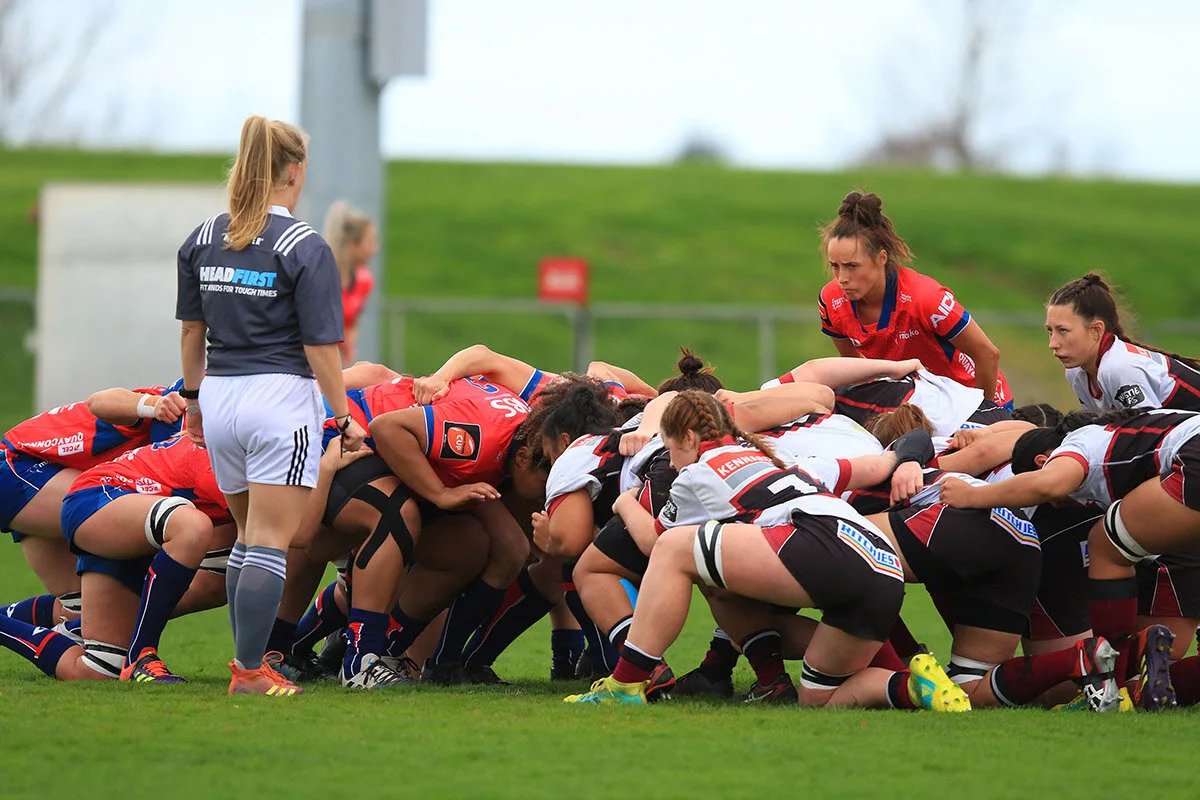Unlocking the Secrets of Winning the Rugby Scrum Battle: Dive into the Intricacies of Scrum Dominance
When it comes to rugby, few moments on the field are as intense and crucial as the scrum. This dynamic and physically demanding set-piece is a true battleground where teams vie for possession of the ball. Winning the scrum is often the key to controlling the game and can make the difference between victory and defeat. In this comprehensive guide, we will delve deep into the art of winning the rugby scrum and explore the techniques, strategies, and skills that make it happen.
The Scrum: A Core Element of Rugby
Before we dive into the intricacies of winning the scrum, let’s take a moment to understand what a scrum is and why it’s so essential in rugby.
The scrum is a structured method of restarting the game after certain stoppages, such as knock-ons or forward passes. It involves the forward players from both teams binding together and engaging in a pushing contest to gain possession of the ball. The team that successfully wins the scrum gains a significant advantage, as they are given the opportunity to launch an attack or retain possession.
Setting Up for Success: The Basics
The Formation
A successful scrum begins with the proper formation. Both teams assemble in a designated area on the field, known as the ‘scrummage line.’ The scrum is typically composed of three rows: the front row, the second row, and the back row.
Front Row
The front row consists of three players: two props and a hooker. These players have a crucial role in the scrum, as they form the initial engagement and provide the primary pushing force. The props are positioned on either side of the hooker.
Second Row
The second row, also known as the locks, comprises two players. They bind behind the props and provide stability and support in the scrum.
Back Row
The back row includes three players: the blindside flanker, the openside flanker, and the number eight. These players bind behind the second row and contribute to the overall strength and control of the scrum.
The Engagement
Once the teams are in formation, the scrum engagement begins. The referee ensures that both teams are ready, and then the scrumhalf from the team with possession of the ball feeds it into the scrum. This moment, known as ‘crouch, bind, set,’ is critical for a successful scrum.
Crouch
Players from both teams crouch down and bind with their opponents. The front rows bind together, with the props gripping onto their opposition’s jerseys.
Bind
Following the crouch, the players bind further by grabbing onto their teammates. The front row players grip the locks, and the locks, in turn, hold onto the back row.
Set
With the ‘set’ call, the two packs of forwards come together with tremendous force, initiating the pushing contest. The team that can generate more power and cohesion during this phase gains a significant advantage.
The Science of Winning the Scrum
Physical Power and Technique
At the heart of winning the scrum is the physicality and technique of the forward pack. Here are the key elements that contribute to scrum success:
Body Position
Maintaining a low and powerful body position is crucial. Players must engage their leg and core muscles to drive forward effectively. The front row, in particular, needs to stay as low as possible to maximize their leverage.
Binding
Proper binding among teammates is essential for stability and strength in the scrum. The front row must bind tightly together, ensuring there are no gaps for the opposition to exploit.
Timing
The timing of the ‘set’ call and the engagement is critical. Teams often practice their scrum timing to perfection, as a well-coordinated push can catch the opposition off guard.
Pushing Technique
The pushing technique varies based on the strategy. Some teams opt for a ‘hit and chase‘ approach, where they drive forward as soon as the scrum engages. Others prefer a more controlled and sustained push, gradually overpowering their opponents.
Scrumhalf Control
The scrumhalf plays a vital role in controlling the scrum. They must feed the ball accurately and at the right time, ensuring it reaches the back of the scrum quickly and cleanly.
The Role of the Hooker
The hooker, positioned in the front row between the props, holds a unique and crucial role in the scrum. They are responsible for striking the ball back with their feet when it enters the scrum. This requires impeccable timing and precision.
A skilled hooker can disrupt the opposition’s scrum by striking for the ball at just the right moment. If successful, they can win possession for their team or create a chaotic situation for the opposing scrumhalf.
Strategic Considerations
Scrum Tactics
Winning the scrum is not only about raw power but also about strategic thinking. Teams employ various tactics to gain the upper hand in the scrum:
Wheeling the Scrum
Wheeling the scrum involves the deliberate twisting of the scrum to one side. This tactic can disrupt the opposition’s push and potentially win a penalty.
Splitting the Opposition
Teams may attempt to split the opposition’s scrum by driving a wedge between the front and second rows. This tactic can destabilize the opposing scrum and create opportunities for a steal.
Controlling the Ball
Some teams opt to control the ball at the back of the scrum, keeping it under the number eight’s feet. This allows them to dictate when the ball is released, putting pressure on the opposing pack.
Psychological Warfare
The scrum is not just a physical battle; it’s a mental one too. Teams often engage in psychological warfare, trying to intimidate and unsettle their opponents. This can involve aggressive shouts, facial expressions, or even subtle movements to gain a psychological edge.
The Role of the Referee
The referee is a pivotal figure in ensuring a fair and safe scrum. They closely monitor the scrum engagement, ensuring that it is safe and legal. The referee also decides when the ball should be fed into the scrum and when to call for a reset if the engagement is not correct.
Common Mistakes and Penalties
In the high-stakes environment of the scrum, mistakes can be costly. Here are some common errors that can result in penalties or scrum resets:
Early Engagement
Engaging in the scrum before the referee’s ‘set’ call is a punishable offense. It can give the non-offending team a significant advantage.
Collapsing the Scrum
Deliberately collapsing the scrum to prevent the opposing team from winning the ball is a serious offense and can result in penalties or even yellow cards.
Boring In
‘Boring in’ refers to the act of angling the scrum inward, towards the opposition. This tactic is illegal and can lead to penalties.
Popping Up
Popping up occurs when a player in the front row rises out of the scrum prematurely. This weakens the scrum and can result in penalties.
The Scrum Battle in Modern Rugby
As the sport of rugby evolves, so too does the scrum. In modern rugby, the scrum is not just about brute force but also about adaptability and versatility. Teams are constantly looking for innovative ways to gain the upper hand.
Scrumaging Units
Teams often have specialized scrummaging units within their forward packs. These units consist of players who excel in the scrum and are chosen for their ability to dominate in this area.
Scrum Coaches
Many professional rugby teams employ scrum coaches who focus exclusively on improving scrum techniques and tactics. These coaches work closely with the forwards to refine their skills and strategies.
Video Analysis
Video analysis has become a valuable tool in scrum preparation. Teams study their own scrums and those of their opponents to identify weaknesses and opportunities for improvement.
The Impact of Rule Changes
Over the years, rugby’s governing bodies have introduced rule changes to make the scrum safer and more competitive. These changes have had a significant impact on how teams approach scrummaging.
Engagement Sequence
The ‘crouch, bind, set’ sequence was introduced to create a more stable scrum engagement. This change aimed to reduce the risk of early collapses and injuries.
Feeding the Scrum
The introduction of a straight feed into the scrum by the scrumhalf was implemented to make the scrum more contestable. It eliminated the advantage of the team feeding the ball, creating a fairer contest.
Front Row Substitutions
Teams are now allowed to make tactical substitutions in the front row, giving them fresh legs and a potential advantage in the scrum.
Winning the Scrum: A Team Effort
Ultimately, winning the scrum is a collective effort that involves the entire forward pack working in unison. It requires physical strength, technical expertise, and a deep understanding of strategy. The front row must bind tightly, the second row provides stability, and the back row contributes to the overall power and control.
The scrumhalf’s role in feeding the scrum accurately and the hooker’s precision in striking for the ball are equally critical. Moreover, the team’s ability to adapt to changing circumstances and employ effective tactics can determine the outcome of the scrum battle.
As rugby continues to evolve, the scrum remains a captivating aspect of the sport. It’s a showcase of raw power, skill, and strategy, where teams compete not only for possession of the ball but also for supremacy on the field.
In Conclusion
The art of winning the rugby scrum is a multifaceted endeavor that goes beyond mere physicality. It involves a deep understanding of technique, strategy, and psychology. It’s a contest where every player in the forward pack plays a crucial role, and where the outcome can shape the course of a game.
From the initial formation to the scrum engagement, from the tactics employed to the psychological warfare waged, winning the scrum is a complex and dynamic process. As rugby continues to evolve and adapt, so too will the methods and approaches to scrummaging.
In the end, mastering the scrum is not just about winning possession of the ball; it’s about seizing control of the game and setting the stage for victory. It’s a testament to the enduring appeal and challenge of this remarkable sport.

